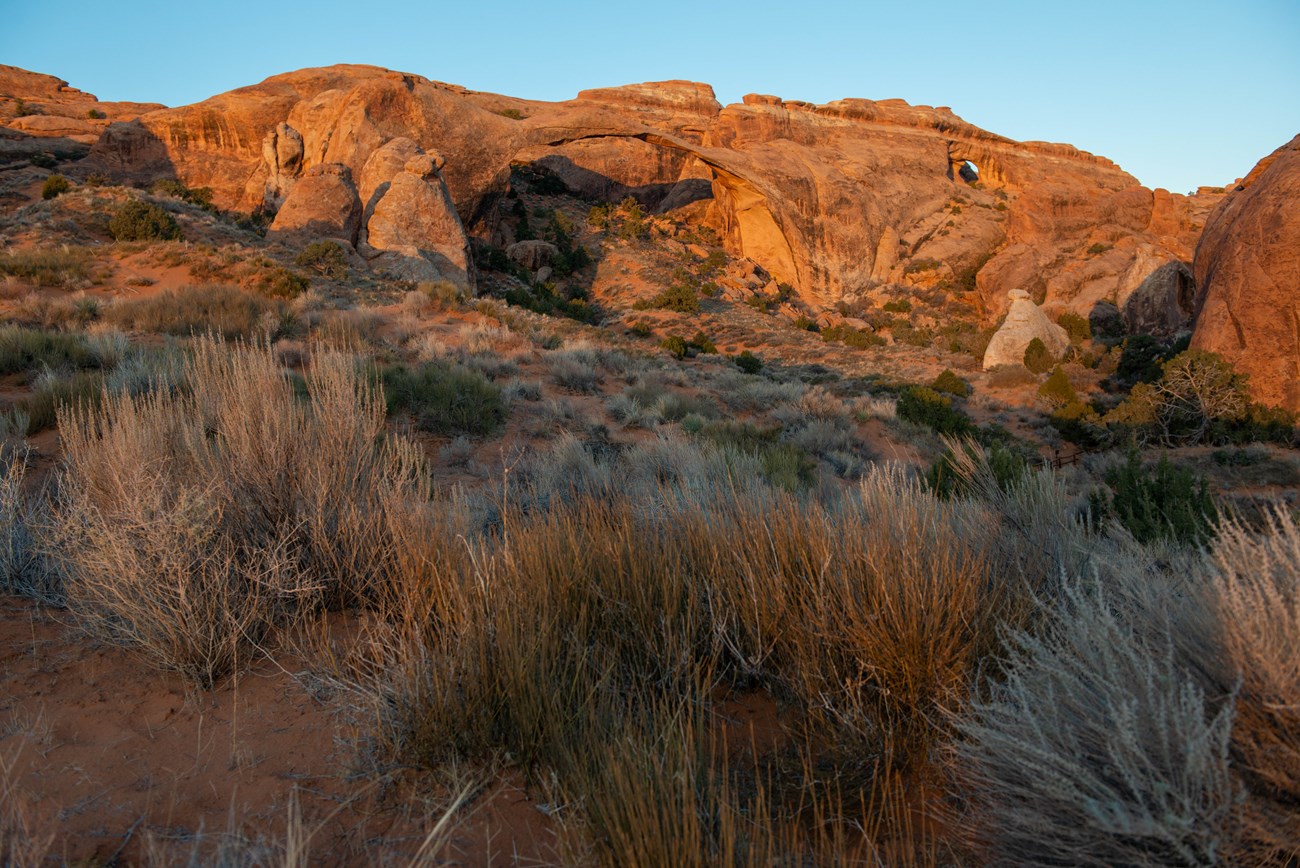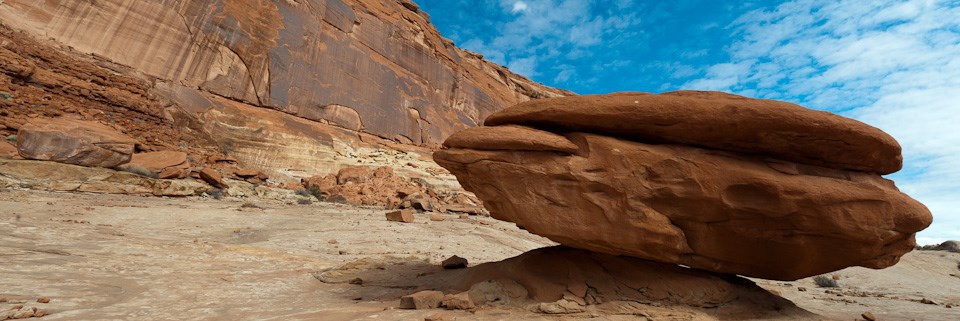
NPS/Veronica Verdin A Story in StoneThe story of Arches begins roughly 65 million years ago. At that time, the area was a dry seabed spreading from horizon to horizon. If you stood in Devils Garden then, the striking red rock features we see today would have been buried thousands of feet below you, raw material as yet uncarved. Then the landscape slowly began to change. First, geologic forces wrinkled and folded the buried sandstone, as if it were a giant rug and someone gathered two edges towards each other, making lumps across the middle called Anticlines. As the sandstone warped, fractures tore through it, establishing the patterns for rock sculptures of the future. Next, the entire region began to rise, climbing from sea level to thousands of feet in elevation. What goes up must come down, and the forces of erosion carved layer after layer of rock away. Once exposed, deeply buried sandstone layers rebounded and expanded, like a sponge expands after it's squeezed (though not quite so quickly). This created even more fractures, each one a pathway for water to seep into the rock and further break it down. Today, water shapes this environment more than any other force. Rain erodes the rock and carries sediment down washes and canyons to the Colorado River. Desert varnish appears where water cascades off cliffs. In winter, snowmelt pools in fractures and other cavities, then freezes and expands, breaking off chunks of sandstone. Small recesses develop and grow bigger with each storm. Little by little, this process turns fractured rock layers into fins, and fins into arches. Arches also emerge when potholes near cliff edges grow deeper and deeper until they wear through the cliff wall below them. In addition to grand arches, water dissolves small honeycomb formations called tafoni. Over time, the same forces that created these arches will continue to widen them until they collapse. Standing next to a monolith like Delicate Arch, it's easy to forget that arches are impermanent. Yet the fall of Wall Arch in 2008 reminded us that this landscape continues to change. While some may fall, most of these arches will stand well beyond our lifetime: a lifetime blessed with an improbable landscape 65 million years in the making. 
NPS/Neal Herbert 
Why So Many Arches?Arches National Park has the densest concentration of natural stone arches in the world. There are over 2,000 documented arches in the park, ranging from sliver-thin cracks to spans greater than 300 feet (97 m). Why are there so many arches in this place? How do they form? And what is an arch, anyway? Read More |
Last updated: February 27, 2024
